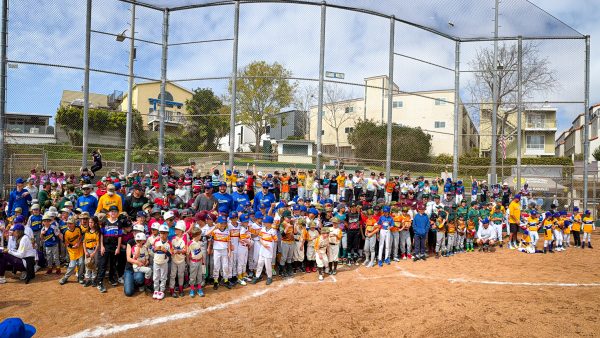Even before analyzing the impact of AI on academic integrity, have you ever thought of how academic stakeholders reacted after the calculator entered the classroom for the first time? People questioned the use of this technology to the extent that some learning institutions in the United States and globally banned them at certain academic levels. For instance, some schools didn’t allow pupils in lower grades to use the slide rule in their classwork, let alone exams. Their underlying rationale concerns the technological role in limiting learners’ computational capabilities and consequently ruining them. Today, many schools continue holding the same rule of not allowing students in lower grades to use the calculator. However, do you think that since Blaise Pascal, the French mathematician-philosopher, designed the first adding machine between 1642 and 1644, has it undermined students’ computational literacy?
The invention of the calculator did not deter scholars’ contribution to the application of mathematics. For example, Daniel Bernoulli, a Swiss mathematician, expanded the knowledge of fluid mechanics through his invention. So, what do you think of AI’s impact on academic integrity?
When you are living in the current world, you can’t deny how technology has evolved to mimic human intelligence, what you refer to as Artificial Intelligence (AI). Initially, AI’s use entailed performing repetitive tasks such as customer followers, report generation, and data entry. At this time, the primary concern among educational stakeholders was aligning school curricula with the job market. For example, it was needless to train professionals with solely data entry or report generation skills.
Today, AI can partly or completely replace professionals in performing creative tasks such as arts, coding, and writing, be it academic or professional. Similar to the way schools deterred the use of calculators to lower grades, they have now opted to limit the application of AI in college to preliminary research only. What does this mean?
Rather than learning institutions outlawing the use of AI completely, they have advocated for conscious use. This rule of safeguarding academic integrity obligated students to devise the following strategies to ensure that their assignments are human-written:
1. Minimizing the use of technical terms
What can you derive from Albert Einstein’s quote, “If you can’t explain it simply, you don’t understand it well enough?” When you answer a question on your exam or assignment, proper explanation and/or contextualization of the vocabulary you’re using is obligatory to avoid issues of AI-generated content. Even if you’re pursuing your master’s or Ph.D., you don’t need to memorize technical terms in your course materials or textbooks to earn distinguished criteria in the rubric. Take a look at the following examples to understand proper use of vocabularies:
- Example 1 (possibly marked as AI-generated content): The manager balanced the triple constraints.
- Example 2 (Possibly not marked as AI-generated content): Through technological advancements to minimize errors and time required for booking in procuring and managing inventories, the administrator balanced the triple constraints.
In two examples, the idea communicated is the same. In the first case, it lacks a clear explanation about the strategies the manager will use to increase the quality and reduce the cost and timeline of the project. The likelihood of the AI detector tool marking the first example as AI-generated is high. However, the second example is human-written, as you can comprehend the role of technology in reducing the timeline for booking and enhancing quality through reducing errors.
2. Refraining from clichés and/or generic statements
Even without the advent of AI-generated content issues, answering essay or exam questions with general statements is unacceptable, considering that it depicts limited knowledge or understanding of a concept. You will most likely find yourself in such situations if you don’t consult scholarly sources, specifically journals, chapters of books, and reports from reputable organizations. What’s more, today, many web pages that you might incorporate as your reference are AI-generated. In this case, if you rephrase such content, any free AI essay generator will less likely mark it as human-written.
Take a look at the following examples to understand the difference between general- and specific-content statements:
- Example 1: The company made a profit in its first year of operation (will likely be not AI-generated content).
- Example 2: The company breaks even in its first year of operation (will likely be not AI-generated content).
What do you notice from the two examples? Do you know that a profit can be negative or positive in accounting and finance?
Yes, of course, when you write that “The company made a profit in its first year of operation,” it will be unclear whether the writer meant a zero, negative, or positive. Such a statement doesn’t communicate anything factual. In the second example, you can understand that the payback period for the company is a year, or it made zero profit in the first year of operation.
3. Using AI for brainstorming and Idea generation only
When you research online on a specific topic, how do you incorporate such information? Usually, if you are not an expert, you might just rephrase the information directly. However, a pro will only rely on the evidence to uncover unique ideas.
Similar to the way you utilize the information from online sources, you should only treat AI-generated content as a guide for in-depth research, and you won’t have any issues with AI.
Generally speaking, as technology evolves, especially AI, students should devise new strategies to survive the academic integrity turbulence. If you have an eagle eye, you will notice that these three ways entail exhaustive comprehension of concepts. Therefore, AI aims to isolate students who have keen attention to subjects or topics from those who use a take-easy approach.










